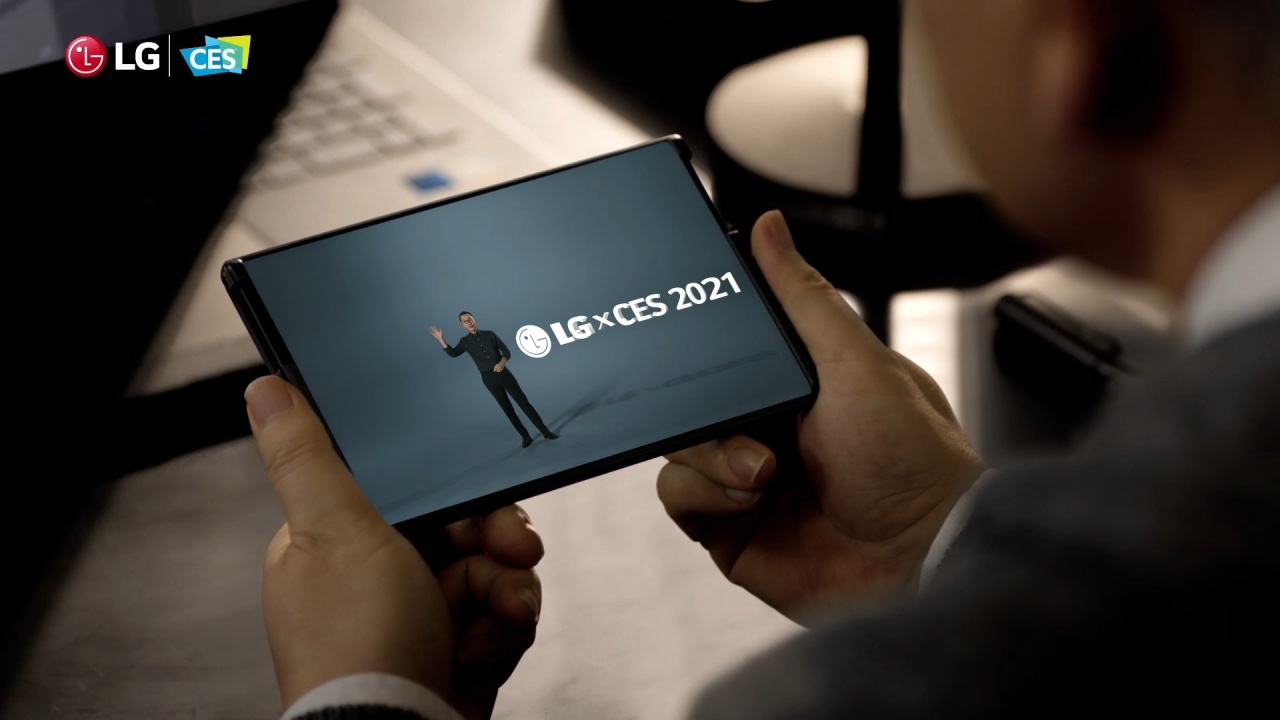LG bows out of handset business, bets on mobile solutions
By Song Su-hyunPublished : April 5, 2021 - 10:45

LG’s board of directors decided to officially terminate the handset business by July 31 after trying, and failing, to sell it off in the past two months.
“LG has failed to respond well to the intensifying competition with the top two players in the mid-range smartphone market,” the company said in a statement. “Amid the market situation, the company has decided to use internal resources efficiently and focus on competitive businesses for future growth.”
The South Korean phone vendor will stop manufacturing phones in June, but will keep its technological assets and know-how from the business for future businesses, it said.
“The smartphone unit’s core technologies, including 6G telecom, mobile camera and software, will be needed for LG’s future businesses, such as TVs, home appliances, auto parts and robots,” the company said. “Research on the relevant technologies will continue under the CTO Office.”
LG will fulfill its manufacturing and supply contracts until the end of May. After that, no more LG phones will be produced.
“Even after May, the company will continue after-sales services for LG phone users,” it said. “And remaining inventories will still be available for sale.”
Since January, LG has sought to find a new owner for the smartphone business. It held talks with Vietnamese conglomerate Vingroup, but failed to produce a deal as they were unable to settle on a price.
The most controversial issue regarding LG’s exit from the phone business was the fate of its 3,400-strong workforce.
LG Electronics CEO Kwon Bong-seok has previously promised to keep all of them on the payroll.
“The company will reallocate and reassign the workforce in accordance with individual capabilities to other LG affiliates and businesses,” the company said. ”The relocation of the workforce will help the company gear up for a new era of closely connected Artificial Intelligent of Everything.”
Many are expected to be moved to the company’s thriving home appliance unit or to its new automotive parts business LG Magna Powertrain.
LG’s smartphone manufacturing plants located in Vietnam, Brazil and India would be converted for home appliances and other products.

LG’s mobile phone legacy
LG’s handset business dates back to 1995. It was the world’s first company to commercialize the CDMA phone in February 1995, led by LG Group’s telecommunications affiliate.
LG phones started gaining fame locally with its first brand, Cion, in May 1998. It was later changed to Cyon.
The LG telecom unit merged with LG Electronics in 2000.
What made LG a global phone vendor was the “Chocolate” phone, launched in 2005.
The firm sold more than 10 million units of the model till April 2006, breaking the sales mark for the first time. Globally, it sold over 20 million units.
Other globally popular LG phones included its Shine phones in 2008, and its KP100 and KG270 phones.
Up until 2008, LG was the world’s third-biggest phone manufacturer. Then Apple swept the market with its first iPhone in 2009.
Even at the dawn of the smartphone era, LG stuck to feature phones, a decision that many industry experts in hindsight consider a misjudgment.
At the time, its domestic archrival, Samsung Electronics, switched from feature phones to smartphones, releasing its first Galaxy S series.
As the smartphone market grew, consumers turned their backs on LG phones, although the company continued releasing feature phones with the Windows operating system, such as the Arena and New Chocolate phones. LG belatedly jumped into the smartphone market, launching the Optimus G in 2012.
It regained its reputation with the G3 phone in 2014, having sold 10 million units globally.
But with the launch of the V10 in 2015, the company’s phone business started going downhill as the product gained a reputation for having technological defects.
After ditching its G and V series brands, LG struggled to resurrect its smartphone business with the LG Velvet and LG Wing in 2020, but both fell short of the 100,000 mark in domestic sales.
Since the second quarter of 2015, LG’s smartphone business had accumulated an operating deficit of around 5 trillion won ($4.4 billion) as of 2020.
According to US-based market researcher Strategy Analytics, LG came in ninth place in global smartphone sales volume with a 2.2 percent global market share as of the third quarter of last year.

Global phone market outlook
With the withdrawal of LG from the global smartphone market, the question then is: Will Samsung remain competitive in the cutthroat smartphone business?
Last year, Samsung’s share of the global smartphone market failed to reach the 20 percent mark for the first time in 10 years. Though Samsung was still in the lead with 19.5 percent, Apple and Huawei followed close behind with 15.5 percent and 14.4 percent, respectively.
But in January, Apple took away the top spot owing to its first 5G iPhone release, threatening Samsung’s reign.
Some industry observers say LG’s pullout was inevitable, considering the growing power of Chinese phone brands and outsourcing companies.
Chinese phone vendor Xiaomi seems eager to fill in the void left by LG in the Korean market.
Eyeing the rapidly growing 5G market in Korea, Xiaomi is rolling out its 5G smartphones with larger discounts. The Chinese maker has also released a foldable phone similar to Samsung’s Galaxy Fold but at just about half the price.
By Song Su-hyun (song@heraldcorp.com)




![[Herald Interview] 'Amid aging population, Korea to invite more young professionals from overseas'](http://res.heraldm.com/phpwas/restmb_idxmake.php?idx=644&simg=/content/image/2024/04/24/20240424050844_0.jpg&u=20240424200058)












![[KH Explains] Korean shipbuilding stocks rally: Real growth or bubble?](http://res.heraldm.com/phpwas/restmb_idxmake.php?idx=652&simg=/content/image/2024/04/25/20240425050656_0.jpg&u=)

